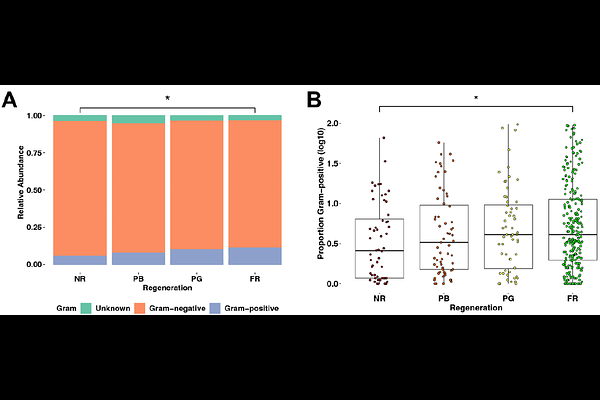Commensal skin bacteria interact with the innate immunesystem to promote tail regeneration in Xenopus laevis tadpoles.

Commensal skin bacteria interact with the innate immunesystem to promote tail regeneration in Xenopus laevis tadpoles.
Chapman, P. A.; Day, R. C.; Hudson, D. T.; Ward, J. M.; Morgan, X. C.; Beck, C. W.
AbstractXenopus laevis tadpoles regenerate their tails following partial amputation, however, for a brief developmental window, some undertake wound healing rather than regeneration. Inspired by links between microbiomes and human inflammatory disease, we asked how tadpole skin microbiomes and innate immunity influence the ability to regenerate tails. Having previously shown that lipopolysaccharide-Tlr4 signalling promotes regeneration, here, we demonstrate that the peptidoglycan-Tlr2 pathway is also involved. While tadpoles acquire their commensal skin bacteria from their mothers, analysis of mitochondrial haplotypes did not explain familial regenerative bias. Levels of endogenous lipopolysaccharides on tail tips were also not predictive of regenerative success, and shotgun sequencing indicated no difference in bacterial loads. To see if microbiome composition correlated with regenerative success, we sequenced 16S rRNA amplicons from 503 tadpole tail tips and mapped these to regenerative outcomes. While no one taxon appeared critical for regenerative success, higher proportions of Gram-positives correlated with successful regeneration. Our results suggest a previously undocumented role for Tlr2, peptidoglycan and Gram-positive commensal skin bacteria in tipping the balance from wound repair to regenerative programmes in Xenopus laevis refractory stage tadpoles.